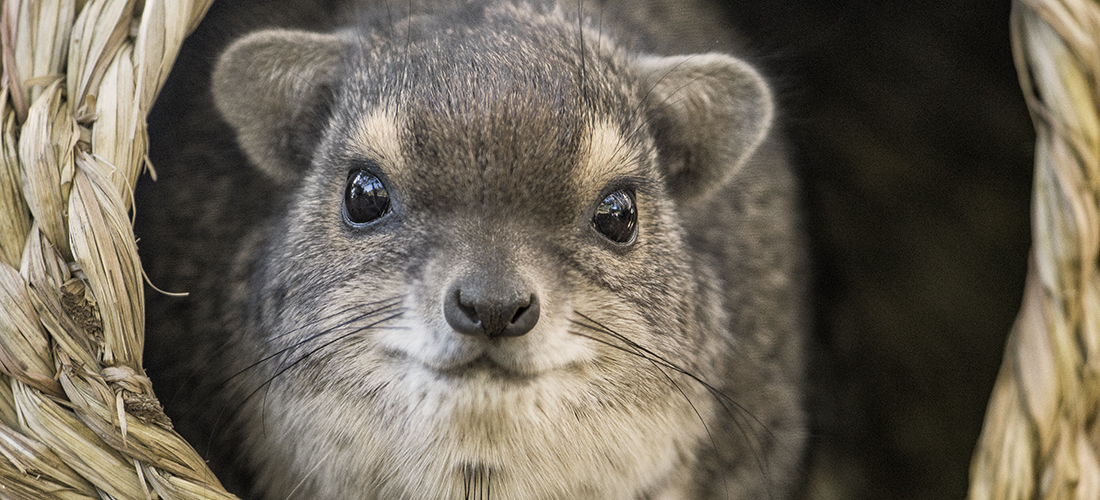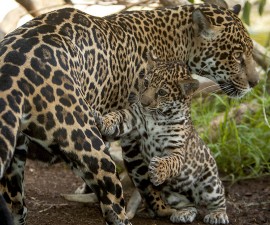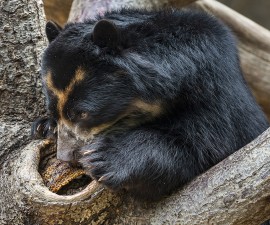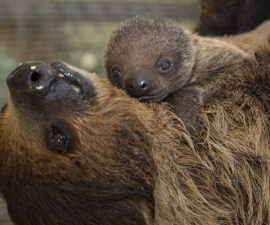Hyraxes may resemble small rabbits or big rodents, but these unique animals have some large relatives and an even larger history, and they belong in a class by themselves.
BY Jenn Beening
Photography by Ken Bohn
Hyraxes have an identity problem. They have an unusual, rabbitlike appearance, yet they are frequently mistaken for a rodent or chubby mongoose. Outward similarities have given the hyrax (pronounced HI-racks) its equally misleading name: the Greek word hyrak means shrewmouse. They’re mammals that use a behavior similar to reptiles to keep warm. And if that isn’t enough confusion, these small, unassuming critters also share a common ancestry with a surprising relative, one of the most recognizable animals in the world—the elephant! Misperceptions aside, the subtle “smile” and prominent eyes of the yellow-spotted hyrax Heterohyrax brucei bakeri, or bush hyrax, make these animals as cute as they are captivating.
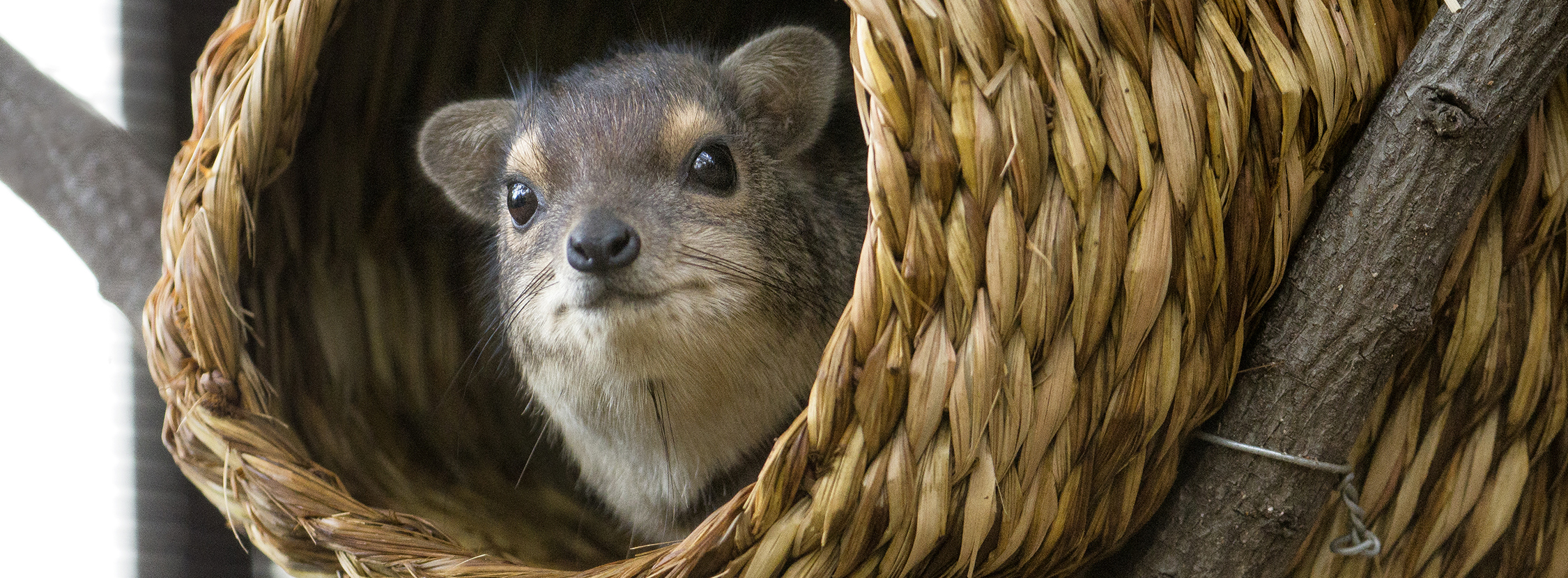
 The number of seconds the shrill, long call of the hyrax can last.
The number of seconds the shrill, long call of the hyrax can last.
A Large History
While contemporary hyrax species are small and stocky, fossil evidence tells a different story. About 40 million years ago, hyrax were widespread, varied in size and shape, and were the most important browsing ungulate in Africa. However, when larger antelope and cattle grazed onto the scene, the hyrax was reduced to several small species that adapted to living in less-accessible tree and rock habitats.
Today, there are 24 subspecies of bush hyrax. In some parts of southern and eastern Africa, bush and rock hyrax can be found living together, sharing shelters, huddling to stay warm, and using the strategy of safety in numbers to maximize survival. While the two species differ in breeding behavior and minor physical characteristics, it is their disparities in feeding preferences that allow them to live as close neighbors.
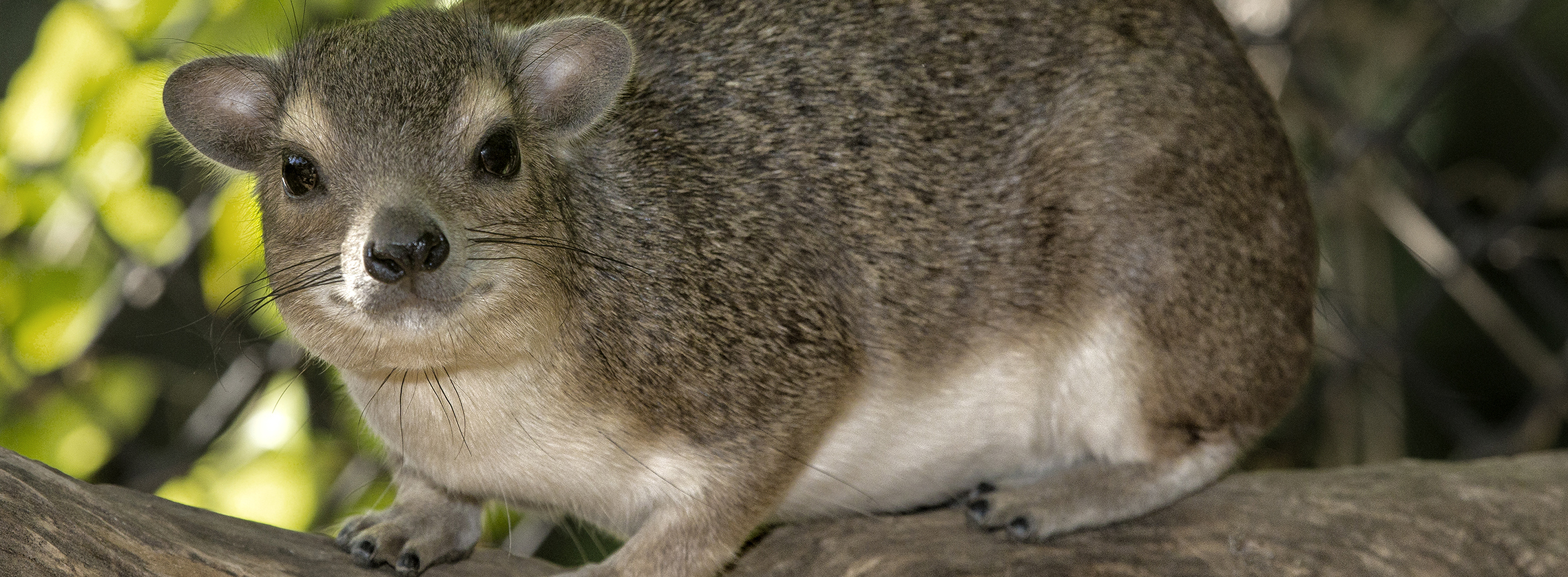
 The number of months in the gestation period of a hyrax. This is unusually long, in relation to their size.
The number of months in the gestation period of a hyrax. This is unusually long, in relation to their size.
Built to Bask and Climb
Looking somewhat like fuzzy footballs, bush hyrax measure 12.5 to 22 inches in length and weigh 2 to 7 pounds. Males and females are similar in size, but females have been known to live longer—up to 11 years! The hyrax is covered in short, pale gray to brown fur, with a lighter-colored underbelly. Its striking, creamy-white eyebrows set the bush hyrax apart from the rock hyrax. Mature adults are are also distinguished by a yellow or white spot on the back, exposed when the bush hyrax bristles in excitement or to signal a threat.
A bush hyrax’s flexible feet were made for climbing. Rubbery foot pads equipped with sweat glands act like suction cups, helping the hyrax grip smooth rock surfaces as it jumps across boulders. Kopjes offer the bush hyrax refuge from predators in the nooks and crannies between rocks, as well as a relatively consistent environment to balance their imperfect body temperatures. Large boulders also provide sufficient surface for these small mammals to bask in the sun.
For much of its life, the bush hyrax is busy doing absolutely nothing. In fact, adults spend only five percent of their day in active pursuits, mostly browsing for delectable leaves, twigs, flowers, and fruits. Their tusk-like incisors—the only clue that reveals their distant relationship to the elephant—are useful for cropping and consuming food during short feeding bouts.
 The percentage of time adult hyraxes are active.
The percentage of time adult hyraxes are active.
When not browsing, the bush hyrax catches rays and collects heat from surrounding rocks. Similar to its rock hyrax counterparts, the bush hyrax needs to maintain its body warmth to stay alive. This simple, lethargic lifestyle has its advantages. Minimizing movement helps the hyrax conserve energy, and basking like lizards and other reptiles do keeps its body temperature comfortable. Bush hyrax also make up for their poor thermoregulation with gregarious huddling.
Although crucial to its survival, stretching out on exposed rock and basking in the sun can be dangerous—to a Verreaux’s eagle, various snakes, and leopards, a sunbathing hyrax is basically a toasted treat. But the bush hyrax finds safety in numbers, and large colonies of more than 30 individuals always have a sentry on duty. The dominant male uses long, shrill calls to communicate threats to the group, which immediately takes cover in rock crevices.
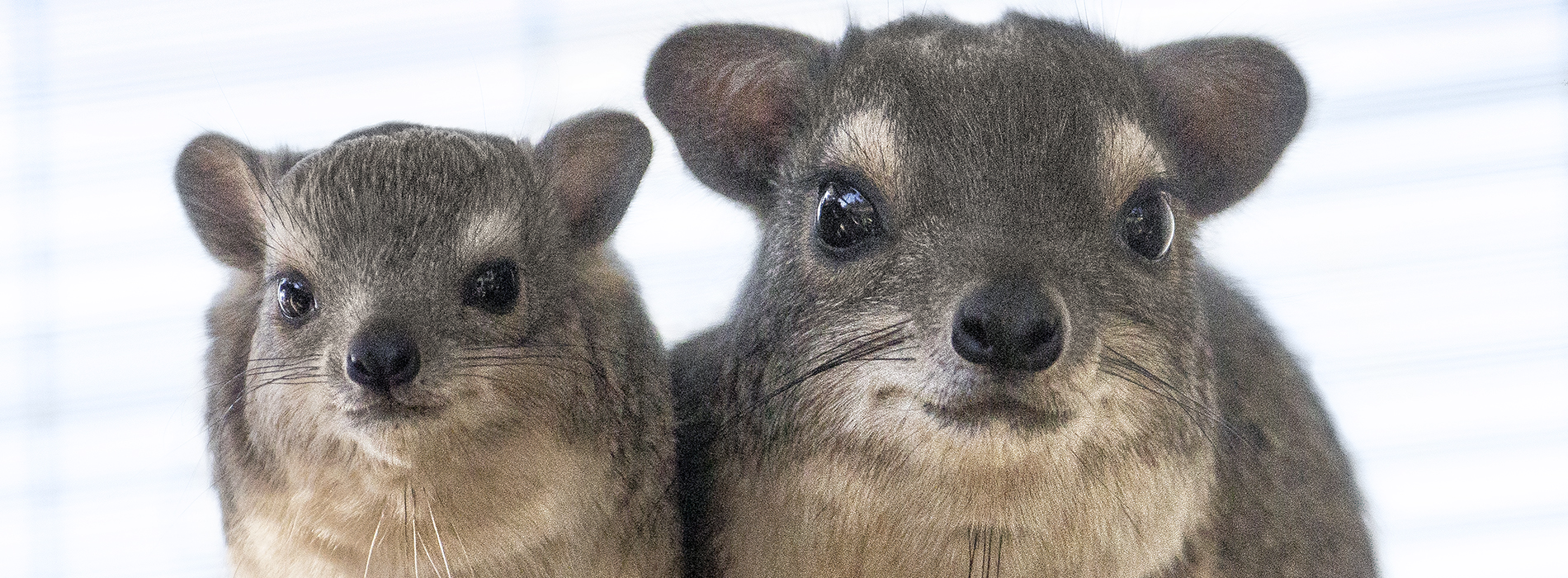
 The number of minutes that a feeding bout can last for a hyrax.
The number of minutes that a feeding bout can last for a hyrax.
Spotted at the Zoo
The Zoo’s close-knit colony of yellow-spotted hyraxes—three females and one male—arrived in April 2013 and welcomed their first pup on October 20, 2015. After a seven-month gestation period, hyrax mothers in a group give birth to their babies around the same time. The pups are fully developed when they are born and ready to run—and the first pup at the Zoo was no different. “This newborn was very precocious,” says Victoria Girdler, senior keeper at the Zoo. “Shortly after birth, the youngster was out and about, exploring the exhibit with the rest of the group.”
Among the kopjes of Africa, hyrax homes can be spotted by locating telltale white patches of the animals’ crystalized urine along the rocks. The animals are easier to see at the San Diego Zoo, where visitors can admire these unique and endearing animals in the exhibit on Center Street near the entrance to the Harry and Grace Steele Elephant Odyssey. The San Diego Zoo is the only zoo in the US where you will find this unusual hyrax subspecies, so stop and take a little time to enjoy our bush hyrax family during your next day at the Zoo!

